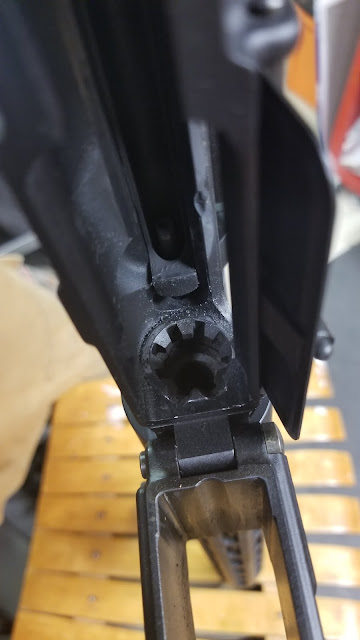Beyond Stoner's AR-15
Introduction:
Eugene Stoner and Jim Sullivan designed the AR-15 to be a lightweight, reliable rifle that could continue to run in fairly adverse conditions. The gas system of an AR rifle plays a huge role in its design. The quasi-direct-impingement gas system that Stoner designed has proven itself to be reliable enough for combat around the world. The buffer tube and bolt carrier group provide a soft, straight recoil impulse that is notoriously easy to control. This all being said, companies are continuing to iterate on the original AR-15 design and seeking to improve it further.
Details:
One of the most popular design changes made to AR-15's has been in the gas system. Multiple different companies have converted AR-type rifles from their original configuration to some sort of gas-piston system. The most popular conversion I've seen is a short-stroke gas piston system. I think the most famous of these systems is the one in the HK 416.
The HK 416 utilizes a short-stroke gas piston system that is pretty much taken directly off of the G36. Upon firing, gas acts o the piston, pushing it back only a small amount. This piston acts on the operating rod to propel the bolt carrier rearward by inertia alone. This provides some distinct advantages over the gas impingement system on a normal AR. First off, it is a much much cleaner operating system. A typical AR shoots gas and residue from firing directly into the upper receiver. This causes carbon buildup over time, potentially restricting bolt movement, resulting in an elevated risk of malfunctions. Because gas only travels a few inches in a HK 416, they system stays cleaner overall.
There are disadvantages with this though. A gas-piston AR is potentially more prone to get gummed up with dirt in adverse conditions. In a normal AR, the bolt carrier has vent holes in the side that blows out gas with every shot. In addition to these holes being necessary for the system to function, they also aid in blowing out any dirt and debris that may potentially get in the ejection bolt and cause a malfunction.
Bolt carrier design has also been revamped by manufacturers over the years. The primary issue with the original design is that the long bolt carrier and buffer tube prevent a folding stock from being utilized. This limits the rifles portability and means that sacrifices in barrel length will be made to reduce overall length. One rifle that has done this very well, is the Sig Virtus.
The Sig Virtus is a gas-piston AR and maintains a short receiver that does not need a buffer tube. As you can see in the photo, the bolt carrier is essentially the same design, but with the rear portion gone. Instead of this rear portion of the bolt carrier pushing into the spring buffer, the recoil springs are located over the bolt carrier. This leads to a taller upper receiver, but a shorter overall length. This system requires significant engineering on the part of Sig. Engineers at Sig had to not only create a gas-piston system for an AR, they also had to tune it to work reliably with a bolt carrier that is significantly lighter and with dual recoil springs.
Conclusion:
Eugene Stoner's design was solid at the time, and remains so today, but even he saw room for improvement. Stoner and Sullivan, after the AR-15, designed the AR-18. The gas system of the AR-18 was the template for most modern western rifles, including the SCAR, G36, L85, and HK416. This being known, it's not a surprise at all that the best of Stone and Sullivan's designs have been combined into modern rifle platforms. Personally, the Sig Virtus I believe is the current pinnacle of what an AR-type rifle can be. Reliability, ergonomics, and adaptability are combined in a slick package that can run with the best ARs on the market.





Comments
Post a Comment